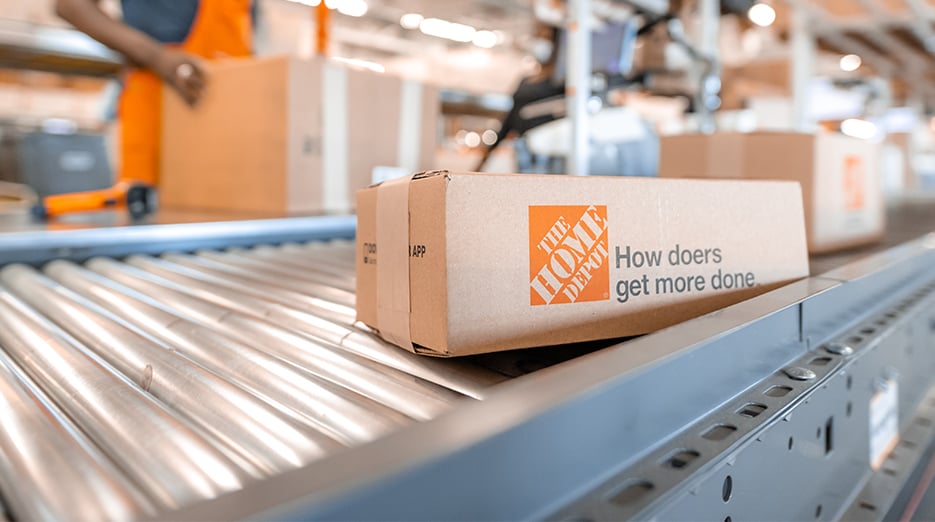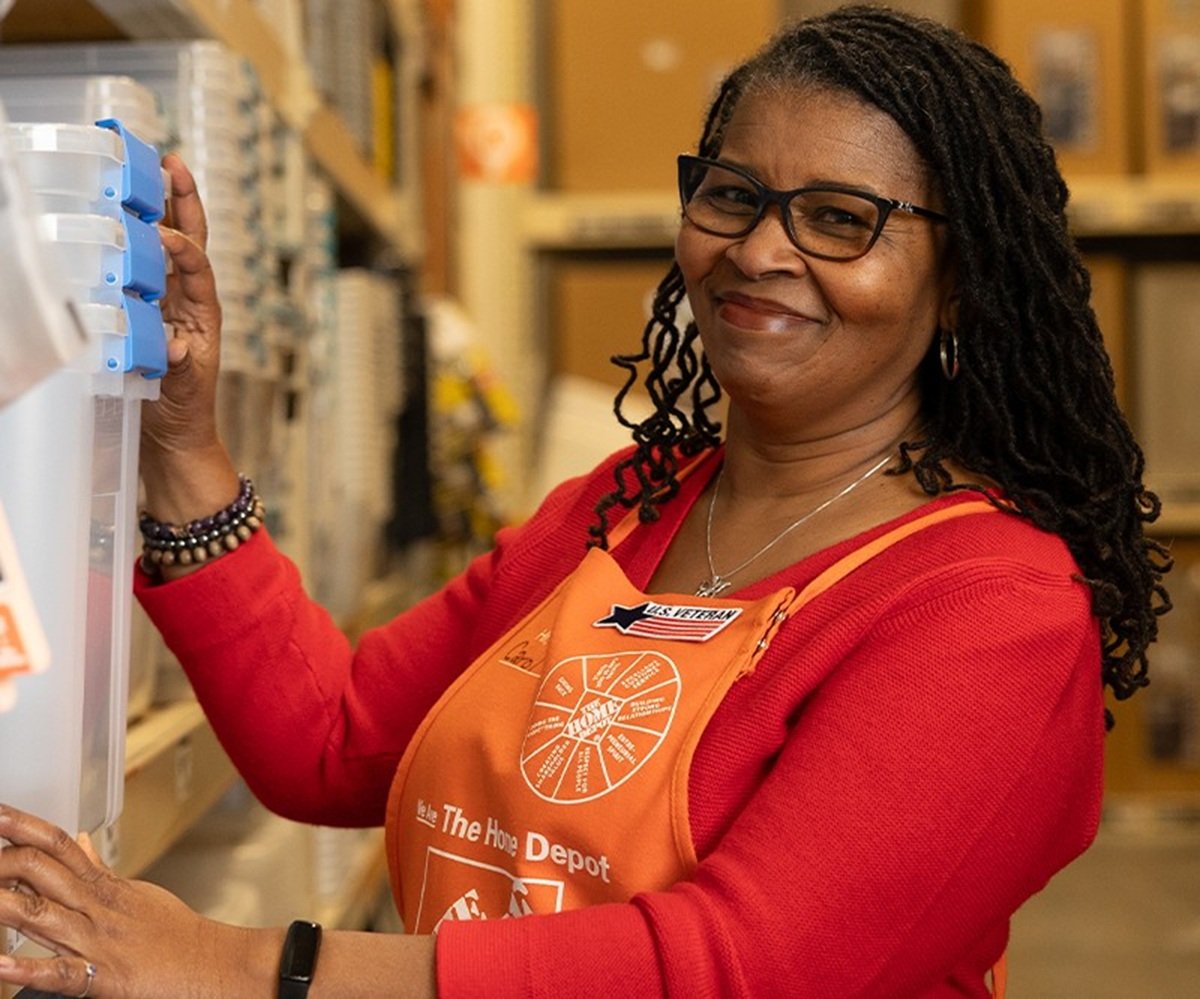The Home Depot (NYSE: HD) announced in February the opening of a new "direct fulfillment center," or DFC, in the Atlanta suburbs. This is the first of three DFCs the home improvement chain plans to open in the U.S. over the next two years. These fulfillment operations, in turn, are designed to foster the growth of the company's nascent venture into e-commerce.
It believes the DFCs will increase the number of orders the company can ship and increase the pace of deliveries for orders made on HomeDepot.com. The fulfillment centers will enhance online orders and shipping with a stockpile of 100,000 products, which is more than the 35,000 products currently available at a typical brick-and-mortar location.
Better late than never
Home Depot's entry into the e-commerce game may be a bit late. But it is a necessary step if the company intends to grow, and keep pace with rivals like Lowe's (LOW +0.26%) as well as the broader changes in retail consumer buying habits.
In fact, Lowe's already has a three-year head start after it launched its "Flexible Fulfillment" online strategy in 2011. At that time Lowe's plan was to upgrade its in-store IT infrastructure in order to ship products from the best location -- either a store or distribution center or even a third-party vendor.These products are then readily shipped to a customer's home.
The fulfillment strategy enhanced the company's ability to manage its inventory. This is key for retailers across the board since optimizing inventory lends itself to cost containment.
Why it matters
Obviously, changes in consumers' shopping habits are in play, and purchasing goods and services online is not the wave of a distant future, it's happening now. So these forays by Home Depot and Lowe's are inevitable. Albeit the big-box home improvement retailers are not like other retailers because of the bulky items home improvers sell.
Prior to the growing popularity of Internet sales, retailers grew by opening new locations. In fact, Home Depot's CEO Frank Blake recently acknowledged that the retail model had long been to increase sales by opening new stores. "But as you added stores to a finite group of households, each store becomes less profitable," Blake said in an interview with The Wall Street Journal.
While Home Depot builds its e-commerce platform, the company also intends to stop opening new stores. Furthermore, while online sales accounted for only 3.5% of the company's $78.8 billion of sales last year, the pace is picking up. And Home Depot is making a big investment (reported to be $1.5 billion this year) to tighten the bolts between its stores and Internet business, along with the new fulfillment centers.
Brick-and-mortar still in Lowe's shopping basket
While Home Depot ramps up its e-commerce initiative, Lowe's has not abandoned the brick-and-mortar concept. In fact, Lowe's took a big step in this regard last year with its acquisition of Orchard Supply Hardware.
The $205 million deal included 72 stores along with assuming the payables to nearly all of bankrupt Orchard's supply partners. Orchard is to continue operations as a separate business from Lowe's, but the acquisition also will enable the company to grow its presence in California.
Moreover, the deal is aimed at building a new customer base since Orchard's locations are smaller-format stores in densely populated areas. Orchards products also closely match Lowe's hardware and garden supplies with the emphasis on paint, repair, and lawn categories. Prior to this transaction, Lowe's was operating 110 stores in California.
Robert A. Niblock, Chairman, President and CEO of Lowe's, said in a statement, "Strategically, the transaction will provide Lowe's with an attractive opportunity to increase our store footprint in California, where we are currently underpenetrated, through a neighborhood store format that is complementary to our strengths in big-box retail."
The bottom line
Home Depot remains strong in many ways as it continues to be the leader of big-box home improvement chains. In its most recent conference call, earnings per share were up 7.3% compared to the same year-ago period. Moreover, the company's annual report noted that the home improvement retailer increased its bottom line by earning $3.75 compared to $3 in the prior year.
Finally, the company's share price is flirting with $80 -- a bit below its 52-week high of $83.20. Most important, the Depot's forward P/E ratio is 15.55 -- below the present P/E ratio of 21.22, which is a sign of continued earnings and share price growth.
Of course, it is too soon to predict the extent to which earnings growth will be driven by e-commerce sales. But the company's upcoming earnings announcement on May 20 may shed some light on this. Meanwhile, Home Depot will be able to expediently align its brick-and-mortar locations with consumer demand by way of an enhanced supply chain via direct fulfillment centers. And this will also free up in-store floor space for better-selling products.
In sum, Home Depot's e-commerce platform is an opportunity for the company to continue growing, and this is a good strategy for investors with a long-term view.







